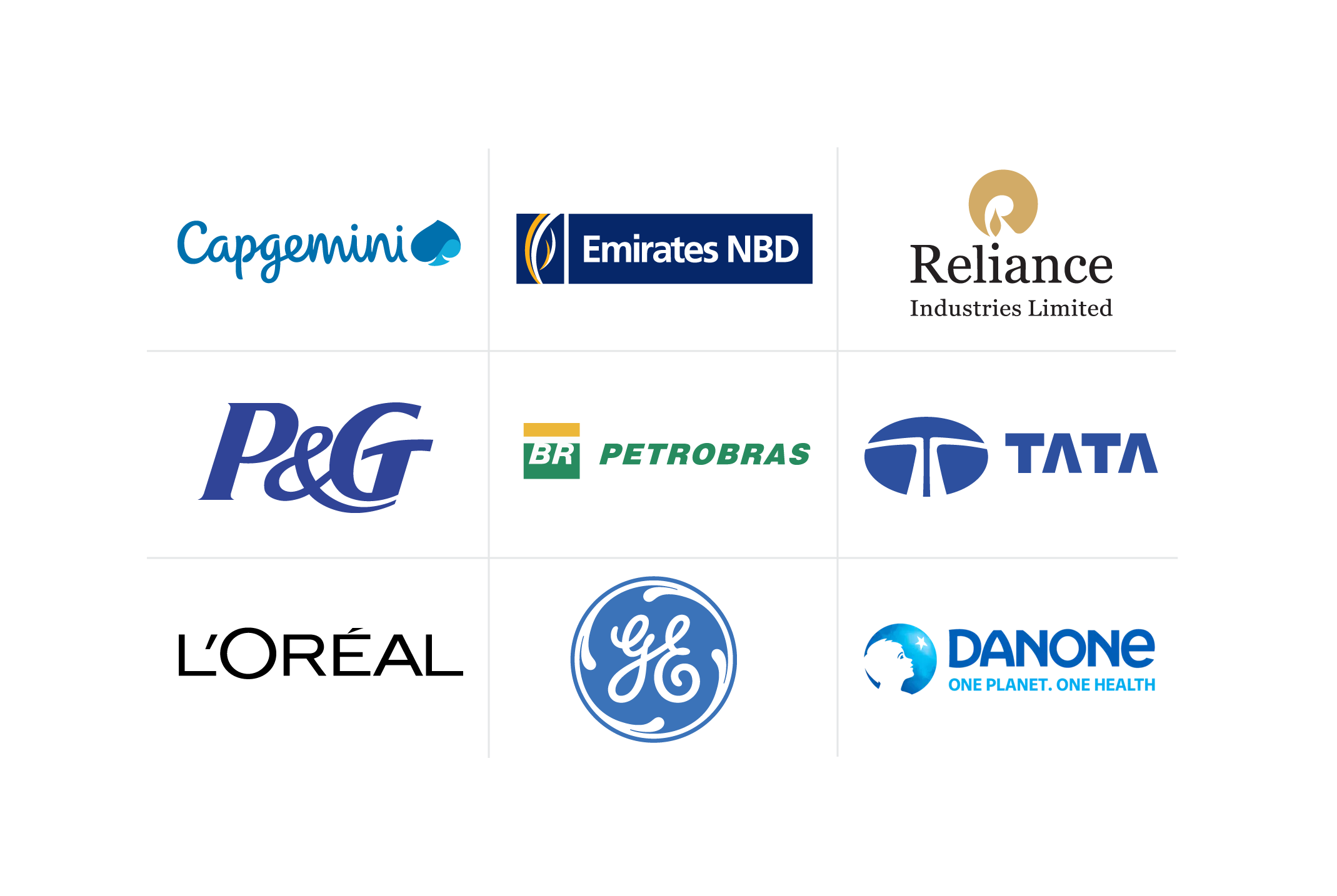Navigating Learning Competencies for Corporate Excellence
Learning competencies provide a framework to guide your organization toward success. Explore learning competencies and how to use them to enhance your organization’s skill set.
![[Featured Image] Human resources colleagues gather in a communal work area to brainstorm about the learning competencies to address next as part of their company’s corporate training program.](https://d3njjcbhbojbot.cloudfront.net/api/utilities/v1/imageproxy/https://images.ctfassets.net/2pudprfttvy6/5mY3r4dewOtMLVFNFub1Ey/af437fa24a1d3a9d0ed45a4e421c0ea8/GettyImages-539447656.jpg?w=1500&h=680&q=60&fit=fill&f=faces&fm=jpg&fl=progressive&auto=format%2Ccompress&dpr=1&w=1000)
Integrating learning competencies into corporate training programs is a strategic move that can enhance the effectiveness of employee development efforts. By aligning learning competencies with your organization’s goals, you can equip your workforce to meet current challenges and capitalize on future opportunities.
Delve further into learning competencies and how they differ from learning objectives to better understand their role in your company’s ongoing professional development efforts.
What is a learning competency?
Learning competencies are high-level concepts and skills that you want students to become proficient in by the end of the course or instruction period. These are different than learning objectives, which are specific tasks or measures through which you can assess whether students have mastered the learning competencies. Learners complete competencies by showing their mastery of the subject, which they can demonstrate through knowledge, skills, and behaviors.
For example, if the learning competency is the “ability to communicate across teams effectively,” the learning objective might be writing weekly briefs with project milestones and upcoming steps in a way that employees with different backgrounds can understand.
Understanding learning competencies in the corporate landscape
In a corporate context, learning competencies are areas of professional development that guide employees toward success in their current position and future career aspirations. These areas include:
Knowledge: Essential information that relates to relevant professional content areas. Employees might acquire this knowledge through formal education, training, and development programs, or experience, among other avenues. An example of knowledge would be the R programming language syntax.
Skills: Employees use these tools to apply knowledge effectively. Continuing with the R programming language example, a skill would be applying the R programming language syntax to write an effective program script.
Abilities: These are innate and learned aptitudes that help employees work effectively. After writing an R programming script, an “ability” would be an employee effectively communicating the script outline to people with non-technical backgrounds or engagingly leading an R programming training workshop.
By clearly defining what employees need to know and be able to do, organizations can create targeted training programs that close skills gaps, promote continuous learning, and develop a corporate brand identity based on shared core values and competencies across all employees. By defining your learning competencies, you can create a clear direction for individual and organizational growth, ensuring that every training initiative contributes to the overarching goal of corporate excellence.
Key learning competencies for corporate success
While your core competencies are likely to vary depending on your organization, specific competencies are broadly considered critical to long-term corporate success. These competencies are not just about technical skills. They also encompass workplace skills and strategic abilities needed for employees to handle complex challenges, innovate, and drive the organization forward. As a corporation, you may benefit from taking time to cultivate the following areas in your workforce:
Communication
Employees demonstrating this competency can clearly articulate and exchange information with people of all backgrounds. It involves active listening, asking appropriate questions, and framing communication to be respectful in different contexts.
Career development and learning
Organizations that value learning are more likely to retain employees and see increased productivity and efficiency. Employees who desire to expand their skill set and work toward progressive career goals can play an integral role in corporate success.
Leadership
Leaders in a corporate context can identify strengths in the employee workforce and capitalize on these to build project teams and achieve goals. Influential leaders inspire and motivate their teams, thinking outside traditional methods to utilize diverse resources and project planning tactics.
Problem-solving
Employees should be able to anticipate and identify obstacles as they arise, including generating solutions to these problems. This includes being able to weigh different options and take strategic risks.
Diversity, equity, and inclusion (DEI)
This competency allows employees to empathize, include, and work effectively with people of varied backgrounds. When needed, employees should challenge systems that promote inequality. All employees within the organization should treat others with fairness and respect.
Digital technology
Technological proficiency has become a must in the modern workforce, even outside of technical professions. Employees should be open to learning new technologies, enhance their workflow with relevant technical tools, and use technology to make informed decisions.

How to identify the right learning competencies for your workforce
To attract talent, improve the employee experience, and achieve business objectives, offering robust professional development opportunities is essential in the modern workplace. However, every workforce has its unique requirements. Try some of the following steps to identify the essential learning competencies for your organization.
Tailor competencies to company goals.
Align learning competencies with organizational objectives so your employee development efforts directly contribute to the company’s success over time. For example, if your employees work directly with customers, a vital learning competency to foster might be customer service. If this is the case, you might employ learning objectives related to delivering friendly service, active listening while conversing with clientele, and effective customer research to anticipate needs.
Analyze employee roles and responsibilities.
Break down each job role within your company to understand its specific tasks and responsibilities. Identify the skills required in each role, including examples of behaviors an “ideal employee” would exhibit daily. This analysis should cover technical and human skills such as leadership, communication, and problem-solving.
Conduct a skills gap analysis.
Perform a skills gap analysis to determine your workforce's current skills and those that require additional training or recruitment. This analysis involves assessing employee capabilities and comparing them against the competencies identified. Once you identify skills gaps, you can begin structuring your competency-based training efforts.
Challenges with integrating learning competencies into corporate training programs
Integrating learning competencies involves several steps, from defining relevant competencies to embedding them into training programs and measuring their impact. One of the first challenges is accurately identifying the purpose of determining your organization’s core and job-specific competencies. You need to identify this process's “end goal” and take time to define the competencies most relevant to your organization’s goals and roles. To do this effectively, you must determine who best prepares this framework and spend time outlining a project scope.
Another challenge includes identifying the correct training mode and allocating appropriate resources for this training effort. To address this, you can plan cost-efficient ways to meet your training goals, including outsourcing training to learning platforms like Coursera. Doing this can help you achieve a balance between high-quality training and resource availability without making compromises that negatively affect efforts.
To determine the correct mode of training, take time to speak with different employees about their preferences and opinions they might have. You can present remote, hybrid, and in-person training seminars and various course presentation styles, like video or text-based. To maximize the effectiveness of your training, stay active in providing feedback, adapting the structure, and encouraging employees to maintain their learning efforts.
Explore competency-based learning on Coursera.
Tailoring learning competencies alongside your company objectives can help you build a workforce equipped to succeed. Coursera’s learning platform allows you to customize employee training plans, including courses, Specializations, and Professional Certificates from leading academic and industry professionals.
With Coursera for Business, you can train teams across your organization in the skills that matter most in today’s digital economy. Your employees will gain access to content from 350+ leading universities and industry partners, where they can build real-world experience with innovative skills, tools, and technologies while earning globally recognized credentials. Our customizable, scalable learning solutions balance workplace and technical skills training in diverse formats, from video clips to guided projects and Professional Certificates. Accelerate your digital transformation and equip employees to drive growth with Coursera.
This content has been made available for informational purposes only. Learners are advised to conduct additional research to ensure that courses and other credentials pursued meet their personal, professional, and financial goals.

